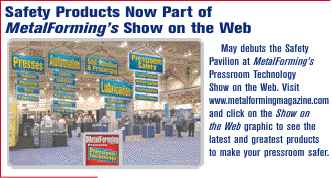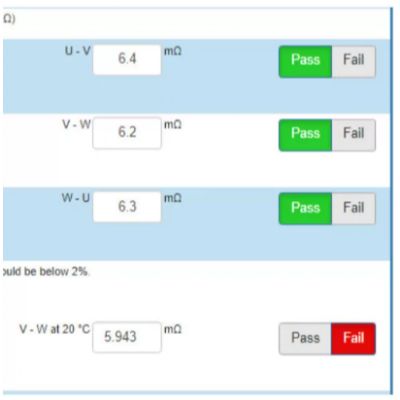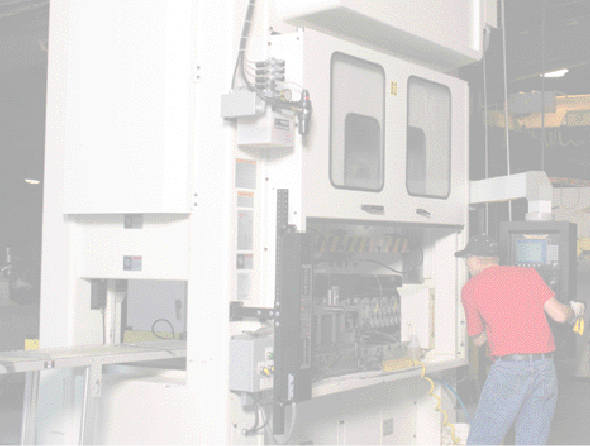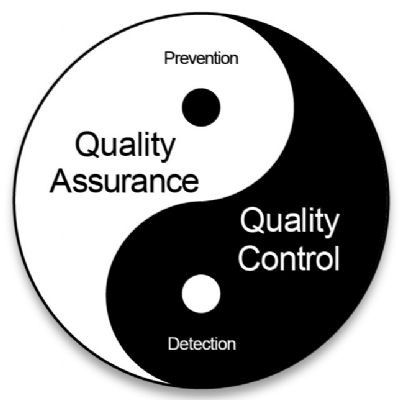The obvious benefit to companies and suppliers with multinational locations and sales areas: one common set of standards to comply with throughout their plants regardless of geographic location, and equipment constructed and safeguarded to similar standards at all locations. Regulatory harmony is a cost saver.
But obstacles remain to complete harmonization. These include:
- Diverse nature of standards authorities/writing organizations;
- Different legacy formats and rules for standards writing;
- Different legal systems in different countries.
Perhaps the greatest harmony between IEC and U.S. standards exists between NFPA 79 Electrical Standard for Industrial Machinery and IEC 60204, a similar European standard. NFPA 79 has many electrical standards applying generically to industrial machinery that are not contained in the B11.1 mechanical-power-press standards. In past years, some standards in NFPA 79 and B11.1 overlapped and conflicted due to NFPA harmonization with IEC 60204.
The presumptive B11.1-2008 standards will remove conflicts with NFPA 79 and, therefore, some conflicts with IEC standards, by harmonizing with overlapping NFPA 79 requirements. Examples include:
- Synchronous operation of individual two-hand controls within 0.5 sec. rather than as concurrent operations;
- Language concerning stop functions, stop circuits and stop actuators is added to the presumptive B11.1-2008 standards to agree with NFPA 79.
New Standards for Servo Presses, Press Systems and Perimeter Guarding
The introduction of direct-drive servo presses until now has represented a category of equipment that existing standards did not address. All previous versions of B11.1 have covered only full-revolution and part-revolution-clutch mechanical-power presses.
The presumptive B11.1-2008 standards now have design and construction requirements that address the new drive system and unique modes of operation possible with servo-motor-driven mechanical presses.
Also, previous ANSI B11.1 standards have tended to address hazards associated with the press and dies while neglecting hazards associated with an increasing array of ancillary and auxiliary press-system equipment. The 2008 B11.1 standards add safety requirements for “hazards associated with press-production systems other than (press) point-of-operation hazards,” including feeding, transfer, conveyer and other equipment and items.
Where previous B11.1 standards have addressed guards and devices for safeguarding each individual press point-of-operation, this often is not possible for automatic press systems using single or multiple presses, robots, feeding or transfer equipment, moving bolsters, and automatic part- and scrap-removal equipment. For years, coil-fed presses, tandem presses with blank and part transfer, and transfer presses have used perimeter guarding to protect individuals from multiple points of operation and coil- and blank-feeding equipment. The presumptive B11.1-2008 standards include requirements for perimeter and area safeguarding of multiple press-system hazards.
 |
General Electrical Standards Expanded
General electrical requirements in the presumptive B11.1-2008 standards have been expanded and changed by bringing in many NFPA 79 electrical requirements.
Stop Functions
- A category 0 stop shall initiate an uncontrolled stop by immediately removing power from the actuator(s).
- A category 1 stop shall immediately initiate a controlled stop with power available to the actuator(s) to achieve the stop, then removal of power to the actuator(s) after stopping.
- A category 2 stop shall initiate a controlled stop with power left available to the actuator(s).
- Category 0 and category 1 stops shall be operational regardless of mode of operation.
Stop Circuits
Stop-circuit requirements include:
- Provisions to connect additional operator controls, devices or interlocks.
- Requirements for stop circuits that stop hazardous motion—category 0 for part-revolution-clutch cycling, category 0 or category 1 for direct-drive (servo)-press cycling, category 0 or category 1 for auxiliary equipment used with the press system as determined by design of the stopping mechanism and risk assessment.
- Category 0 stop circuits for hazardous motion shall have only hardwired electromechanical components unless they comply with requirements for the performance of safety-related functions (control reliability), in which case they can include electronic logic (hardware or software as well as a communication network or link).
- Circuits for stop or emergency stop of hazardous motion shall override all other functions and operations in all modes; remove power to the machine actuators as soon as possible without creating other hazards; not initiate restart of hazardous motion when reset; and not be used as an alternative for proper safeguarding.
- Supplier shall provide circuits to connect safeguarding devices and interlocks to stop hazardous motion of the press and related equipment and machines. These circuits shall conform to the requirements for the performance of safety-related functions (control reliability).
- The control system’s logic shall be signaled that a stop command is initiated from safeguarding devices and interlocks.
- When required for production-system utility, or indicated by risk assessment, a press system that utilizes auxiliary equipment or other machines that have individual controls working in a coordinated manner shall incorporate provisions to signal the related control systems that a stop condition from a safeguarding device or interlock exists.
Stop Actuators
- Stop or emergency-stop actuators to initiate immediate stop of hazardous motion shall be continuously operable and immediately accessible; not be flat switches or graphic representations based on software applications; initiate a category 0 or category 1 stop.
- Stop or emergency-stop actuators to initiate immediate stop of hazardous motion shall be located at each operator station and at other locations where such stop is required; be manually reset to remove the stop condition; be colored red.
- If the actuator is a push button, it shall be of the palm or mushroom-head type.
- Emergency-stop actuators shall have a yellow background, be of the self-latching type and use normally closed contacts with positive (direct) opening action.
- Motor stop buttons shall initiate a category 0 or category 1 stop and shall be of the extended-head or mushroom-head type.
New Cycle-Control-System Standards
The addition of direct-drive presses, which have no clutches but are directly driven and stopped by servo motors, caused the committee to change the designation of “clutch/brake control system” to “cycle control system,” which describes the portion of the control that manages the cycling of the press slide.
Previous standards allowed momentary red-color stop controls at each operator station to immediately stop press cycling, and only required the use of the actuating means to re-actuate cycling. The presumptive standard calls for emergency-stop actuators that must be pulled or twisted to reset after they are pushed, and the use of the actuating means.
Servo presses can operate in all of the same modes as part-revolution mechanical presses—single cycle, continuous, etc.—but a cycle can be programmed to be much more complex for the servo press. Regions of multiple speeds and directions can be programmed for a cycle with multiple hits and dwells on material as well as simulated link drive for forming and dwells for coining.
- Homing mode is a nonproduction mode used to calibrate and establish tarting and ending points for the particular slide motion selected.
- Incremental mode is a nonproduction mode allowing, with a rotary encoder or similar device, for manual control of fine slide movement for setup.
New Standards for Press-System Auxiliary Components
Slide Locks
Design and construction standards for slide locks, an alternative to safety blocks, are included in presumptive ANSI B11.1-2008. A requirement for inspection of slide locks also is included in the maintenance section.
The automotive industry has encouraged the use of slide locks instead of safety blocks and has developed design and use criteria that it presented to OSHA. OSHA now has issued an OSHA Instruction, Directive Number CPL 02-01-043, which now is in effect. This directive recognizes slide locks as a slide-support means for lockout, giving enforcement policy, inspection procedures and performance criteria.
Moving Bolsters
Design and construction standards for moving-bolster motion-control circuits are provided in the presumptive B11.1-2008 standards.
For automatic bolster movement: circuits for safeguarding and interlocks shall be provided; any safety stop shall immediately stop hazardous motion in the protected area; and reset of the safety system and manual re-initiation of the bolster movement by the operator is required after a safety stop.
For manually controlled bolsters: movement shall require continuous actuation of the operator control; and either the control shall be located to provide visibility of associated hazards or safeguarding shall be provided.
Scrap Chutes
Design and construction standards for scrap chutes try to reduce falling and crushing hazards by requiring that:- Means shall be provided to facilitate the safe clearing of scrap jams in the chute.
- Covers shall be designed to reduce or eliminate slips, falls or other hazards.
- Nonpowered scrap chute covers shall be designed to minimize fall and pinch-point hazards to personnel during installation or opening/closing.
- Powered scrap chute covers shall be designed so that actuation does not occur when personnel are exposed to hazards from scrap-chute motion, the locked position of the cover shall be indicated and loss of power shall not create a hazard.
New Safeguarding-Clause Requirements
A section is added in the safeguarding clause on hazards associated with press systems other than press point-of-operation hazards. These include:
- Rotating components such as flywheel, gears, sheaves and shafts in close proximity to personnel;
- In-running nip points;
- Pinch points;
- Coil-feed or related feeding equipment;
- Automated material-handling equipment including robots, shuttles, transfer systems, etc.;
- Moving bolsters, die carts, die shuttles;
- Scrap chutes;
- Crowns, pits and other confined spaces.
Perimeter and area safeguarding requirements are included in the B11.1 standards for the first time to address safeguarding of areas containing multiple point-of-operation or other press-system hazards that are not individually guarded.
The new standards require either additional guarding to be used with perimeter guarding where individuals can pass into the safeguarded area, or manual reset of the perimeter-guarding system before hazardous motion can occur. The action of closing a guard or clearing the sensing field of a presence-sensing device shall not reset the perimeter guarding. The manual reset device must be located outside of the area, and if the entire safeguarded area is not visible from the reset location, the standard requires a method of detecting or warning personnel in non-observable locations.
The OSHA Connection
OSHA 29 CFR 1910.217 regulations for mechanical-power presses are law while ANSI B11.1 standards are voluntary, but OSHA is considering adopting something similar to the presumptive new ANSI B11.1-2008 standards. There may be some differences in the assignment of responsibility because, by law, OSHA addresses employers and ANSI has responsibilities related to suppliers, integrators and others.
Unless or until OSHA adopts standards similar to the presumptive new B11.1-2008 regulations, users will not be bound by law to upgrade press systems to incorporate the added and revised requirements, and there will be no forced costs related to new standards requirements, although some companies will voluntarily comply with ANSI B11.1.
Potential costs to industry from revised OSHA standards or voluntary compliance with the presumptive ANSI B11.1-2008 standards arise from:
- Risk-assessment/risk-reduction requirements;
- Updating of control components and functions to meet design and construction requirements not currently in OSHA;
- Increased emphasis on safeguarding hazards for auxiliary and ancillary press-system components.
Risk Assessment/Risk Reduction
Direct costs of the requirements for users to perform a risk-assessment and risk-reduction procedure for each press system are not particularly great, but large potential indirect costs arise. These are due to the relative and subjective nature of the risk-assessment/reduction process, which requires identification of “reasonably foreseeable tasks and associated hazards” as well as “reasonably foreseeable” hazards not associated with tasks —initially, and when typical press use is modified. These risks shall be reduced to a “tolerable level.” Since “reasonably foreseeable” and “tolerable risk” are subjective terms, iterative OSHA visits and fines while haggling over these terms are possible. In addition, if an accident occurs, the legal term “reasonably foreseeable” may be used in litigation against the employer.
While no extreme changes in the design and construction clauses that OSHA may adopt are expected, most existing presses may require some updating to meet the new requirements, such as:
- Red mushroom-head or palm emergency-stop button with yellow background that must be pulled or twisted to reset after pushing. Estimated cost per button: $50 to $150 plus installation.
- Synchronous operation within 0.5 sec of two-hand controls on individual operator stations (unlimited concurrent operation is still allowed between different operator stations). Off-the-shelf two-hand control timer modules are available from several manufacturers that allow this feature to be added to existing controls. Estimated cost per two-hand control station: $350 to $450 plus installation.
Also, the new standards state that the previously allowed top-stop over-run brake monitor “may no longer meet” the requirements for a stopping-performance monitor (brake monitor) and require a stop-time or stop-angle-based stop-performance monitor. While many existing controls have time-based or angle-based brake monitors, a significant number also have the top-stop over-run monitor. Estimated cost to furnish an existing control with a top-stop over-run monitor that otherwise meets requirements with stand-alone stop-time or stop-angle stop-performance monitor: $1000 to $1500 plus installation.
Safeguarding
The hazard-analysis requirements incorporating risk assessment/risk reduction and new emphasis with additional targeted standards to safeguard hazards associated with feeding automation and automatic-die-change equipment such as powered die carts or rolling bolsters and other components of the press system may present some companies, previously concerned primarily with press point-of-operation safeguarding, with significant costs for safeguarding all press-system hazards. Many larger automotive and international companies already have safeguarded in accordance with the new standards and will incur little cost. MF
View Glossary of Metalforming Terms
See also: Link Systems
Technologies: Quality Control, Stamping Presses
Comments
Must be logged in to post a comment. Sign in or Create an Account
There are no comments posted.Use Lean Six Sigma for Efficiency & Quality Improvement
Daniel Schaeffler Friday, October 27, 2023
 Management
ManagementSeeking Small Victories: Continuous Process Improvement
Daniel Schaeffler Monday, September 25, 2023
 Quality Control
Quality ControlIn-Process Inspection Software Provides Real-Time Visibility
Tuesday, March 28, 2023







